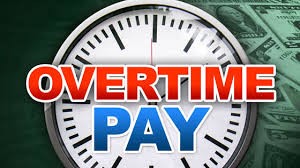What would a $15 per hour minimum wage do to your home care company? If your state passed legislation requiring it, who would be the winners and losers? What can you do about it?
We’ve been closely monitoring the rapidly growing trend of cities across the country passing laws requiring that minimum wages be increased, with the target being $15 per hour.
An article in the Washington Post dated October 21, 2015 revealed that the SEIU in California has given some money to create an organization called The Fairness Project. According to their web site,
“In 2016, The Fairness Project will focus on ballot-initiative campaigns that seek to raise the minimum wage, working with partner organizations across the country to enact legislation through the ballot box to improve pay for millions of working people. Building this strong national platform will support our 2016 goal to win minimum wage campaigns in multiple states and localities and establish a base of support on other economic issues for years to come.”
Their targets are the states of California, Maine, and the District of Columbia.
Already we have seen laws passed in Seattle, Los Angeles, and several other cities. In 2014, minimum wage initiatives passed in Arkansas, Alaska, Nebraska, and South Dakota.
According to the Ballot Initiative Strategy Center, minimum wage measures have been tried 20 times in 16 states since 1996, and all but two succeeded. The earlier victories came in waves, starting with the “living wage” movement in the 1990s.
Watch This Trend
As the CEO of a Top Ten home care company, or a CEO who wants to be in the Top Ten %, you need to be watching this trend closely. We’ve had a number of conversations with home care CEOs in the Seattle Area. One told us that the first reaction she got from caregivers when the minimum wage moved up to $13.00 per hour was that they wanted fewer hours because they were not making too much money and it was affecting their other benefits. That means that workers make the same money, clients pay more, and companies make less.
While legislators and regulators think they are doing employees a big favor with these new rules, it is often the very people they want to help who are paying the biggest price.
Implementing Overtime Rules
Another example of how new laws and regulations hurt caregivers and clients is the recent ruling by the US Court of Appeals in the 
District of Columbia upholding the US Dept. of Labor’s new interpretation of the Companionship Exemption. Effective October 13, 2015, home care companies will need to pay overtime for caregivers working more than 40 hours per week.
Our good friend, Marki Flannery, the Executive Vice President and Chief of Provider Relations for the VNS of New York wrote an article for the Huffington Post. In her article, Marki pointed out how caregivers and clients will be hurt by the overtime rule.
“My organization, the Visiting Nurse Service of New York, believes strongly that the nation’s home health aides should be paid a living wage. In New York, these dedicated workers earn an average of $10 an hour for the work they do each week helping elderly and disabled individuals bathe, dress, eat and otherwise carry out their daily lives. For many elderly people, the daily care that HHAs provide is what allows them to continue living in their own homes, rather than enter a nursing home.
At VNSNY, we have always provided wages and benefits to our HHA employees that exceed the industry average. In recent years, however, this has become steadily more difficult, as both Medicare and Medicaid have reduced their reimbursement levels for home health services. Now, the Labor Department’s regulation (assuming it goes into effect) has taken a difficult situation and made it impossible. Why? Because while the desired effect of the regulation–to increase the income of the country’s HHAs–is laudable, it is missing one essential ingredient: a mechanism to pay for the increased cost.
The result, sadly, will be exactly the opposite of what was intended: Home health aides across the U.S. are likely to end up working fewer hours and earning less total income, while patients will have to endure fragmented care. We could even see a number of home healthcare agencies go out of business because they find it financially impossible to comply with the new state of affairs.”
While Marki’s points in this article relate to increasing Medicare and Medicaid reimbursement to cover the increased costs of providing care, we need to be thinking about how individual consumers will be able to avoid the increased cost of remaining independent at home.
Stay Tuned to the Home Care CEO Forum
For more up to date information on the latest trends in home care, stay tuned to Leading Home Care for the Home Care CEO Forum, a new membership network for CEOs in the Top 10% of the industry, and those who want to be in the Top 10%.




